Granma 299
From Quebec, with love…

From Quebec, with love…
August 20, 2009
Author: MIGUEL FEBLES HERNÁNDEZ
A CubaNews translation.
Edited by Walter Lippmann.
From the cold and faraway Canadian city of Quebec arrive every year the warm solidarity and the sympathy of hundreds of citizens who turn a deaf ear to all anti-Cuban campaigns to travel to our land and get to know it through its people.
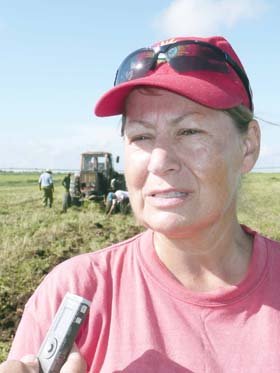
Colette Lavergne: “Every visit to Cuba makes us more confirmed in our conviction to fight for a better world”
So was the case of Colette Lavergne, a Quebecois through and through who found out in 1992 that the Cubans were something more than just a hospitable, party-loving people.
“I didn’t want to come. There’s so much misinformation and negative promotion about Cuba in my country, and they vilify and discredit the Revolution and its achievements so much that I expected to find here a sad, downhearted, oppressed people…
“It was quite the opposite, however: I found a happy, dignified and resolved people who defend what belongs to them. They have a country where they live with their head held high and not on bended knee. Since then I fell hopelessly in love with the Cubans.”
Two years later, when the special period had reached crisis point, Colette took her first steps as an activist for solidarity and friendship between Quebec and Cuba.
“I remember my first experience at the Cándido González High School in the city of Matanzas. Ten children had come with my daughter, who was then taking part in an international education program, and a wonderful unity and understanding grew among all those boys and girls.”
Their visit was such a success that in the following year reality went beyond all expectations:
“We organized a preparatory meeting for the following trip and over 300 people turned out who were eager to know Cuba. We had no choice but to rent a plane that we jam-packed with 160 Quebecois. That time we went to Consolación del Sur, in Pinar del Río province.”
Quebec’s solidarity has been steadily mounting ever since by means of various projects to become familiar with life in Cuba, not as simple visitors but through coexistence, involvement and mutual knowledge.
From family to family
Never did the little Guillaume Fournier ever imagine that Fidel and he had the same birthday, let alone that he would once celebrate his harvesting sweet potato, a root vegetable he’d never seen before to boot.
He came with his mom Manon, his sister Annie-Kim, and rest of the Quebec Solidarity Brigade members who these days are visiting Camagüey, since last year the host province for the so-called Family Camp program.
“This project –says Colette, leader of the solidarity organization ARO-International Cooperation– aims at the exchange between families. That’s why we have children with their parents and even a grandma now and then.
“Working in the fields like we’re doing now has been an unforgettable experience and a singular way to bring Cubans, Quebecois and foreign students who live here together in solidarity.”
Alain Menard, a post-office worker who brought his daughter Sabrina so she could see what he felt in five previous trips to Cuba, agrees with Colette:
“This is a country of simple, outgoing, nice people. Every time I come I return to Canada full of optimism and confidence that we can live in a peaceful world where human beings can be brothers and sisters.”
Since 1994, around 5,000 Quebecois have come to Cuba as part of the programs set in motion by Colette Lavergne, a woman who put aside one of her greatest passions –Medical Science– to devote herself body and soul to the work of solidarity with Cuba and its people.
The paparazzi and their share of the blame

The paparazzi and their share of the blame
By Rolando Perez Betancourt
2009
A CubaNews translation.
Edited by Walter Lippmann.
For several days now, the international press that covers show business and their scandals was making a lot of fuss over millionaire Paris Hilton going to Europe to “meet” soccer star Cristiano Ronaldo, best man in the courts today.
 FARRAH FAWCETT
FARRAH FAWCETT
Would they begin an affair? Can the Portuguese escape the seduction of this romance collector? These were some of the expectations around the young star, who was recently acquired by the Real Madrid at an unpronounceable price, and the so called blond of gold. Her merits list is larger, more because she comes from a rich family and for the scandals she never stops creating, than for her performances as actress, model and singer.
Everything seems to indicate that the boy saw her for some minutes, smiled courteously and continued on his way to training. The tall queen of the media, slighted, declared that he had looked “somewhat feminine.”
Soon after, Cristiano Ronaldo was again in the spotlight, not because he is a sports star, but for kicking the car of a paparazzo that was following him on the streets of Lisbon. The soccer star explained in a press release that up to that moment, he had put up with weeks of harassment by sheer self control. But, the image hunter had not taken into consideration that his victim was traveling with his mother. And, one doesn’t disrespect someone’s mother! Therefore, if such a situation repeated itself, he would probably react in the same way.
The almost coincidental deaths of Michael Jackson and actress Farrah Fawcett have put the topic of the paparazzi again on the table. And in passing, the fatal accident of princess Diana of Wales while escaping from a group of them in Paris is also remembered.
Jackson was constantly harassed in his intimacy and Farah Fawcett, who was a cancer victim, left a bitter testimony, days before her demise, accusing the press and the paparazzi of being decisive in the deterioration of her health. They took photographs of her in a wheelchair showing her fragile and haggard. “I asked them to please leave me to fight my illness alone, but they never heard me, they harassed me, they wanted to be beside me every step till the end and it is already known that cancer feeds on stress.”
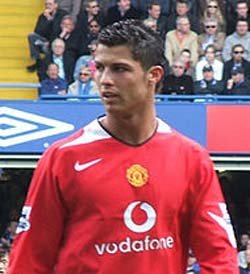 CHRISTIANO RONALDO
CHRISTIANO RONALDO
Technological development –digital cameras and Internet for quick transmission—have made paparazzi proliferate and the competition is ferocious. Some of them are employed and some are independent. And, sometimes they are the ones who pay the so called “stars brokers”, who detect what public figures are doing and locate them. Then the paparazzi speed off by motorcycle, car or airplane to wherever they are. Their objectives are very specific following a unique and unalterable concept: all embarrassing situations are profitable! It doesn’t matter if they are infidelities, evident or imagined, accidents, carelessness of a physical nature (poor Britney Spears and others), being nude in the high seas or in restricted areas, and, most of all, sexual scenes.
In extreme situations, when the intrusion is of such proportion that it defies human understanding, almost all reproaches are usually made to the paparazzi and people forget that –although guilty– they are part of a mechanism that starts higher up. It begins where the owners of big businesses, generally printed media competing with each other, print just about anything “weird” about show business stars.
These are stars that they frequently help manufacture and then go after them and destroy them. All this on behalf of a reader –equally manufactured–that, without realizing he is being manipulated, pays to see what lies behind the curtains of the famous.
And of from there, the paparazzi take their share (of the blame).
Walterio Carbonell, repair and homage

Walterio Carbonell, repair and homage
Author: PEDRO DE LA HOZ
pedro.hg@granma.cip.cu
A CubaNews translation.
Edited by Walter Lippmann.
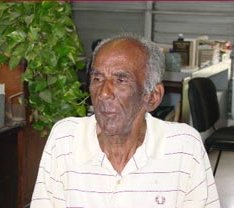 Forty-five years after the first edition, the José Martí National Library has again published Walterio Carbonell’s Cómo surgió la cultura nacional (How national culture emerged) in order to launch Ediciones Bachiller, a humble but arduous effort to rescue long-forgotten, yet essential, texts of Cuban letters.
Forty-five years after the first edition, the José Martí National Library has again published Walterio Carbonell’s Cómo surgió la cultura nacional (How national culture emerged) in order to launch Ediciones Bachiller, a humble but arduous effort to rescue long-forgotten, yet essential, texts of Cuban letters.
National Library director and renowned essayist Eliades Acosta rightly remarks that Walterio’s “is one of the most radical books of the Revolution’s historiography”. Both the author and his book were surely tagged as evil as a result of their radical nature. Going headfirst and with fully loaded cannons into historiographic conventions and domestic myths gave rise to an upheaval of wariness and denials in his epoch. What should have become a consistent discussion of his theses remained hidden in a miasma of ostracism, perhaps tampered with by the existing circumstances.
It came as no surprise to Walterio, who personally confessed to this reporter a few months ago: “my statements were racked with urgency; it was the dawn of the Revolution, our internal ideological struggle had reached its peak and I wanted to help ideological revolutionary views to gain ground. I should have reviewed what I wrote then, develop my ideas more and go deeper into more than one thing or two, but it proved impossible”.
These considerations by no means reduce the basic significance of an essay that for the first time highlighted, in an organic and integrated manner, the contribution of a dominated culture, that of black slaves, and the birth and growth of our nation.
Walterio’s starting point was a Marxist conception of history detached from any mechanistic and oppressive dogmas. When he says that, “neither the nation nor national culture are exactly its social classes, but a product”, and “the problem of creating a nation and its national culture demands an analysis that goes beyond a mere appraisal of a society’s living conditions and class conflicts”, a highly complicated issue in Cuba since, in the 19th century, “not only were the fundamental classes, to wit slaves and slaveholders, in conflict but also the psychic and cultural formation of the Spanish and African population”, the author took a decisive step towards a dialectical articulation of this topic.
He had already smashed to pieces what he called “a bookish and aristocratic approach to culture”, by wondering “whether it would be true that our cultural inventory is made up of a collection of reactionary ideas put across by Arango y Parreño, José Antonio Saco, Luz y Caballero and Domingo del Monte” or “whether by any chance popular culture, whose strength lies in black people’s traditions, is not a cultural tradition”.
In his conclusions, oddly enough, placed halfway through the text, Walterio summarizes several assessments that are full-fledged science nowadays but at that time, and so passionately expressed, they seemed inflammatory. Today, for instance, we know that “the Ten Years War is the expression of the ultimate decomposition of slavery in Cuba” and “it was waged against the metropolis as much as it was against the vast majority of slaveholders”, but I’m not sure at this juncture that ideas like “as the driving force of the colonial economy as well as the most exploited class (…) the slaves became the most revolutionary class” have been deeply studied or, instead of a response to the metropolis’s restrictive policies, “the multiple slave uprisings were a major cause of division amid the ruling class (…): annexationists and reformists”.
Walterio’s book provides the Cuban scientists with present-day proposals to debate and discuss. It would suffice to reintroduce this statement to encourage analysis: “Africa has facilitated the victory of social changes in the country, which by no means imply that Spain has disappeared. It has Africanized instead “.
At any rate, it would be both useful and convenient to breathe the fresh air supplied by Cómo surgió la cultura nacional. Walterio’s work is alive, just like he is, day after day in his quiet post there in the National Library José Martí, proud of having dedicated his book to Fidel and with the memories of having been the one who, in Paris, during the years of Batista’s tyranny, flew the 26th of July banner from the Eiffel Tower.
The conditions for dialogue and peace have been built
- English
- Español

ATERCIOPELADOS
The conditions for dialogue and peace have been built
The Colombian rock duo Aterciopelados will play in Cuba next November
Author: Michel Hernández | michel@granma.cu
A CubaNews translation.
Edited by Walter Lippmann.

Aterciopelados. Photo: Courtesy of the group
In the three interviews that I have done with Aterciopelados in recent years, the Colombian rock duo repeated like a mantra their desire to perform in Cuba. Finally, they will succeed in November when they will lead, together with Chilean rapper Ana Tijoux, the roster of the Patria Grande Festival to be held in Havana and other provinces from 17 to 26 next month. The duo, composed of vocalist and composer Andrea Echeverri and bassist and also composer, Hector Buitrago, will premiere new themes on the island and perform the classics of their repertoire included on the DVD Reluciente, rechinante y aterciopelado (Gleaming, Screechy and Velvety) (2016).
Aterciopelados has a 20 year-plus career, seven studio albums and a handful of songs like “Bolero Falaz” and “Florecita Rockera”, which have become cult themes for their thousands of followers on the Latin scene.
These Colombians, responsible for the expansion of Latin rock on the international stage during the 1990s, will come to Havana after taking part in a historic moment for their country and Latin America. The duo went on stage a few days ago at a concert in Bogota to celebrate the peace agreements between the Government of José Manuel Santos and the FARC-EP.
“It was a great privilege to be part of this historic moment for the country; we were very excited. We all cried, it was emotional, but there was always the specter of what might happen in the plebiscite. Now the question is how to avoid this pitfall; that will be the ultimate test of the dialogue: the real ability to agree among abysmally opposed thoughts,” said Andrea about the triumph of the NO in the plebiscite, in this new interview with Granma, responding by e-mail together with her companion, Héctor Buitrago.
Since its foundation, Aterciopelados has taken sides for the end of the war in Colombia. What did it mean to you to have witnessed the peace agreements?
Andrea: We’ve spent sad and confused days. After being present and excited at the signing of the agreement between the Government and the FARC-EP, the YES lost in the referendum. Without fully understanding the implications of this setback yet, we think that despite the frustration, the conditions for dialogue and peace have been built anyway. The FARC-EP have said that their only weapons will be words, and the government has confirmed that another agreement will be sought that would be agreeable to the majority of Colombians.
Did you think that these agreements would someday materialize?
Andrea: We were really losing hope because the conflict has lasted practically since we were born; there were several attempts and no agreement had been reached. In some way, we became desensitized.
In several of our past interviews you have told me about your interest in playing in Cuba and you will fulfill that wish during the Patria Grande Festival dedicated to great female voices of the region. What are your expectations in those upcoming concerts which, coincidentally, will be held on this historic moment?
Andrea: – We are happy to go to Cuba, happy to accompany female singing, and despite the results, we remain committed to a life project, with an ideology, with a pacifist lyricism of gender, ancestral and ecological.
You’ve just released the CD DVD “Reluciente”. What stage of Aterciopelados does this album summarize?
Hector: It’s a retrospective. It is the celebration of our mileage; it’s like suddenly looking at the past through the eyes of those for whom our songs have been important, and to feel happy, honored, and grateful. And to also feel willing to see it as a new beginning, to continue learning and finding new stuff, errors and bets, wins and losses, risks and creation.
What differences do you perceive between the current Latin scene which gave birth to the band and the present?
Hector: It has grown a lot, the infrastructure, the technical and musical level have greatly improved, which is reflected in the large number and diversity of bands and projects currently on the scene.
Do you feel that Latin rock bands have lost the social activism that, for example, has always characterized Aterciopelados?
Andrea: I think that political militancy should not be imposed. We found it on the road, and it has accompanied us, nurtured us, and strengthened us. But I also feel that it should not be imposed, should not be forced upon; sometimes you want to denounce, criticize, sometimes you’re angry, but sometimes you feel serene and want to dance, sometimes you’re even in love, and you have to write about what you feel and respect that which you are breathing and express it.
In the new album there is the theme “RE”. Can it be seen as a tribute to the eponymous album Café Tacuba?
Hector: Yes it can. The song came up because Ruben himself, the singer of Cafe Tacuba, asked Andrea how Aterciopelados could contribute to the celebration of the 20th anniversary of the “RE” album. So Andrea decided to write that song.
The Duo has always maintained a strong stance in favor of women’s rights. Do you think discrimination against women in Latin America has decreased?
Andrea: I think we have certainly conquered spaces, but there’s still a long way to go. There’s too much inequality, too much patriarchal structure dominating the scene. In fact I think the hyper-sexualization and trivialization of culture (sexualized capitalism, reggaeton, pole-dancing in gyms and, in general, the realm of appearance over substance), has resulted in a setback in some respects. Furthermore, it has strengthened the vision of women as sex objects (a small piece of meat with a barbie-song complex, as we sing in “Oye mujer”), and the impoverishment of the many subtle dimensions of femininity.
What are you working on now after releasing “Reluciente”?
Hector: The idea is to make a new record in 2017. We have material from our solo albums “Conector” and “Ruiseñora”, each in its own house, but the idea is also to compose collectively.
The band has always experimented with rock and the native sounds of Colombia and Latin America. Will you keep that creative spirit in your next albums?
Andrea: The idea is that the high-risk creative spirit is never lost. We have included not only rock and folklore, but also electronics, reggae, disco, blues, music from the Atlantic, music from the Pacific, beach and mountain music; we have even mixed different things in one song, we welcome everything that comes our way, even reggaeton!!! I would love to make anti-reggaeton reggaeton.

ATERCIOPELADOS
Las condiciones para el diálogo y la paz han sido construidas
El dúo colombiano de rock, Aterciopelados, tocará en Cuba el próximo noviembre
Autor: Michel Hernández | michel@granma.cu

Aterciopelados. Photo: Courtesy of the group
En las tres entrevistas que le he realizado a Aterciopelados en los últimos años, el dúo colombiano de rock ha repetido como un mantra su deseo de tocar en Cuba. Finalmente lo lograrán en noviembre, cuando encabecen junto a la rapera chilena Ana Tijoux el cartel del festival Patria Grande, que se celebrará en La Habana y otras provincias del país del 17 al 26 del próximo mes. El dúo, integrado por la vocalista y compositora Andrea Echeverri y el bajista y el también compositor, Héctor Buitrago, estrenará en la isla nuevos temas y presentará los clásicos de su repertorio agrupados en el DVD, Reluciente, rechinante y aterciopelado ( 2016).
Aterciopelados lleva más de 20 años de carrera, siete discos de estudio y un puñado de canciones como Bolero Falaz y Florecita rockera, que han sido asumidas como un objeto de culto por sus miles de seguidores en la escena latina.
Estos colombianos, responsables de la expansión del rock latino en los escenarios internacionales durante la década de los 90, llegarán a La Habana después de participar en un momento histórico para su país y América Latina. El dúo subió a los escenarios hace pocos días en un concierto en Bogotá para celebrar los acuerdos de paz entre el Gobierno de José Manuel Santos y las FARC-EP.
«Fue un gran privilegio ser parte de este momento histórico para el país, estábamos muy emocionados. Todos lloramos, fue emocionante, aunque siempre estaba el fantasma de lo que podía suceder en el plebiscito. Ahora la pregunta es cómo sortear este escollo, esa será la máxima prueba del diálogo, de la verdadera capacidad de ponerse de acuerdo entre pensamientos abismalmente contrarios, dice Andrea sobre el triunfo del No en el plebiscito en esta nueva entrevista con Granma, respondida vía correo electrónicojuntoa su compañero de ruta, Héctor Buitrago.
—Desde su fundación Aterciopelados ha tomado partido por el fin de la guerra en Colombia. ¿Qué significado le otorgan al hecho de haber sido testigos de los acuerdos de paz?
Andrea:—Hemos pasado días tristes y confusos. Luego de estar presentes y emocionados en la firma del acuerdo entre el gobierno y las FARC-EP, perdió el Sí en el plebiscito. Sin entender a cabalidad todavía las repercusiones de este revés, pensamos que de todas maneras, a pesar de la frustración, las condiciones para el diálogo y la paz han sido construidas. Las FARC-EP han dicho que su única arma serán las palabras, y el gobierno ha afirmado que se buscará otro acuerdo con el que la mayoría de los colombianos esté de acuerdo.
—¿Pensaron que estos acuerdos se concretarían algún día?
Andrea:—Realmente íbamos perdiendo la esperanza porque el conflicto ha durado prácticamente desde que nacimos, hubo varios intentos y no se había logrado concretar algún acuerdo. De alguna manera nos insensibilizamos.
—En varias entrevistas que hemos realizado me han hablado de su interés en tocar en Cuba y ya podrán cumplir ese deseo durante el festival Patria Grande dedicado a grandes voces femeninas de la región. ¿Qué esperan de esos próximos conciertos que casualmente se celebrarán en este momento histórico?
Andrea:— Estamos felices de ir a Cuba, felices de acompañar cantos femeninos, y a pesar de los resultados, seguimos comprometidos con un proyecto de vida, con una ideología, con un lirismo pacifista, de género, ancestral y ecológico.
—Acaban de estrenar su CD DVD Reluciente. ¿Qué etapa de Aterciopelados resume este material?
Héctor:—Es una retrospectiva. Es la celebración del kilometraje, es de pronto mirar al pasado con los ojos de aquellos para los que han sido importantes nuestras canciones, y sentirse feliz, honrado, agradecido. Y sentirse también con ganas de que sea un nuevo comienzo, que siga el aprendizaje y los hallazgos, los errores y las apuestas, los triunfos y las derrotas, los riesgos y la creación.
—¿Qué diferencias perciben entre la escena latina que vio nacer a la banda y la actual?
Héctor:—Ha crecido mucho, la infraestructura, el nivel técnico y musical han mejorado bastante, eso se ve reflejado en la gran cantidad y diversidad de bandas y proyectos que se mueven en la escena.
—¿Sienten que los grupos latinos de rock han perdido la militancia social que, por ejemplo, ha caracterizado siempre a Aterciopelados?
Andrea:—Creo que la militancia no se debe imponer. Nosotros la encontramos en el camino, y nos ha acompañado, nos ha nutrido, nos ha fortalecido. Pero también siento que no se debe imponer, no se debe forzar, a veces quieres denunciar, criticar, a veces estás furioso, pero a veces estás sereno y con ganas de bailar, a veces hasta enamorado, y hay que escribir sobre lo que se siente, respetar eso que se respira, expresarlo.
—En el nuevo material aparece el tema Re ¿Se puede considerar un homenaje al álbum homónimo de Café Tacuba?
Héctor:—Si así es, la canción surgió porque el mismo Rubén, cantante de Cafe Tacvba hablando con Andrea le preguntó cómo Aterciopelados podría aportar a la celebración del aniversario 20 del disco RE. Así es que Andrea decidió escribir esta canción
—El dúo siempre ha mantenido una fuerte postura a favor de los derechos de la mujer ¿Creen que ha disminuido la discriminación contra las mujeres en Hispanoamérica?
Andrea:—Creo que sin duda hemos conquistado espacios, pero todavía falta mucho camino por recorrer. Hay demasiada desigualdad, demasiada estructura patriarcal dominando el panorama. De hecho creo que la hipersexualización y banalización de la cultura (capitalismo sexualizado, reguetón, pole dancing en los gimnasios y en general el reino de la apariencia sobre la esencia) da como resultado un revés en algunos aspectos. Además se ha ido fortaleciendo la visión de la mujer como objeto sexual(pedacito de carne con complejo de barbie-canción, como cantamos en Oye mujer), y el empobrecimiento de las múltiples y sutiles dimensiones de lo femenino.
—¿En qué trabajan ahora después de publicar Reluciente?
Héctor—La idea es hacer un disco nuevo en el 2017. Tenemos material de nuestros discos en solitario Conector y Ruiseñora, cada uno en su casa, pero la idea también es componer en colectivo.
—La banda siempre ha experimentado con el rock y sonidos autóctonos de Colombia y América Latina. ¿Mantendrán ese espíritu creativo en sus próximos discos?
Andrea:—La idea es que el espíritu creativo de alto riesgo no se pierda nunca. Hemos incluido no solo rock y folclore, también electrónica, regue, disco, blues, música del Atlántico, música del Pacífico, música de playa y de montaña, incluso hemos mezclado diferentes cosas en una sola canción, bienvenido todo lo que se atraviese, hasta reguetón!!! Me encantaría hacer reguetón antireguetón.
Four Legends in One Single Night
- English
- Español

Four Legends in One Single Night
In late March, the legendary British band will give a concert in Havana’s Ciudad Deportiva, as reported by the Cuban Music Institute.
Author: Michel Hernández | michel@granma.cu
A CubaNews translation.
Edited by Walter Lippmann.
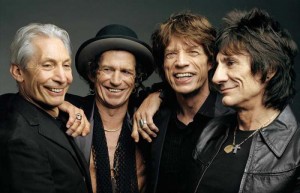
The Rolling Stones (from left): Charlie Watts, Keith Richards, Mick Jagger and Ron Wood plan to play in Havana by late March. (Photo taken from makingofezine.com)
Mick Jagger won’t talk with anyone. He’s attending a concert that a DJ organized specially for him while his crew keeps a tight rein on a crowd of onlookers striving to immortalize a picture of the Stones frontman in their cell phones. I stay nearby, watching the famous vocalist dancing on stage to the beat of electronic music, like he did earlier in another nightclub in town. A close member of his team remarks what I already knew by then: the Rolling Stones want to play here in Cuba. Serious talks are underway with the Cuban side to organize the performance.
The social networks “collapse” under the most famous still active rock band singer on Earth. He uploads the pictures he took in Old Havana as he sparks off fierce controversy about the true purpose of his visit to the Island. Never before had one of the Stones traveled to Havana. And now none other than the mythical singer of Satisfaction who decides to start the band’s history of relations with Cuba.
Jagger scours the city, pays surprise visits to some Cuban musicians, and hits the nightclub circuit together with some members of his crew. He’s known to be not just another tourist, but the musician that has just rescued from lethargy the wish of thousands of Cubans who no sooner had photographs of Jagger in their city than they started to dream of a Rolling Stones concert in Havana, a dream which is top of the sort of bucket list that we almost always write to make a note of the “first ten things I want to do before I die”.
Fortunately, the circle is beginning to close. At last, the Music Institute has confirmed that they discussing the possibility that the band could give a concert in Havana. Should their performance finally take place at Ciudad Deportiva in late March, the Cubans will be able to recreate an unforgettable stage of their lives. The negotiations with the Cuban authorities have been going on for months now, and part of the infrastructure for the concert has already arrived in our country.
Fellow Rolling Stones guitarist Keith Richards had revealed their plans in Europe, which Mick Jagger confirmed with his presence in Cuba last October. The band wants to play in Havana, and he’s putting his heart and soul into it. So everything seems to indicate that the thousands of Rolling Stones fans in Cuba will have a chance to see a dream come true when these four legends go on stage and, wrapped in the tongue designed by Andy Warhol, play a concert sure to become a landmark in both the band’s career and the Cuban scene. It will be the moment when those thousands, full of teen-like pep, will settle one of their greatest scores with their past, as well as an opportunity for the Stones to stand in front of what is likely to be the most feverish audience they have played for in their 50-year-long history.
Despite the inexorable passage of time, there’s no denying that the Rolling Stones are still in their prime, packing stadiums everywhere and speeding up the heart rate of their youngest followers in mammoth shows marked by savoir-faire, all-out dedication and as tremendous a display of energy as if they are celebrating themselves or trying to keep on beating the odds and making it clear that they come from a world where rock and roll was an act of faith, the gigantic business that revolves around the band notwithstanding.
Each Stone is a living legend. At 72, Mick Jagger stands out as a challenge to human nature, moving on stage like one possessed and singing with great dash, the obvious result of natural ways that only time provides. Jagger has always been in the eye of the hurricane and one of the few human beings on the planet capable of telling stories out loud about the wild and bright days of yore when rock ‘n’ roll went beyond the neighborhoods to become an indissoluble component of pop culture. Time hass yet to take a toll on Jagger as he continues giving himself over to each concert as if it were his last.
Keith Richards is a maven of the electric guitar. A hundred legends, be they true or false, hover over him that make him an object of worship among Rolling Stones fans. In fact, no few would like to take him to a lab to find out how, at 72, he can still play the guitar as if he were a freshman at the music academy. To top it all off, he does it with great mastery, thanks to his stick-to-itiveness and his skill at getting rid of the nonessential and playing categorically enough for his every riff to come exactly at the right time within the musical discourse. Keith is not an extreme guitar virtuoso; still, make no mistake: he’s far and away a guitar sensation beyond good or evil.
Drummer Charlie Watts is a very peculiar member of the Stones. At 74, he’s one of the band’s most versatile musicians and one of the most experienced ones to be found behind the drums. All the others, particularly, Keith Richards, have been greatly influenced by his way of playing, and he’s been the main stalwart that supports the relationship, at times stormy, among them. A jazz enthusiast, Watts also spends a great deal of his free time working on solo projects defined by the richness of his genre.
Ron Wood describes himself as a “guitar-playing poet”. The musician has found the time in between his commitments to the Stones to exhibit his works with images of old friends like Jimi Hendrix and Eric Clapton, among others. The youngest member of the band (he’s 68), Wood’s performance as a guitarist is quite discernible for his dexterity and flamboyant bearing on the stage.
As announced, this concert by The Rolling Stones will be a historic event bound to pave the way for other great bands to play in Havana. For instance, this author heard that Paul McCartney and U2 have stated their interest in giving concerts in Cuba. For the time being, Las Piedras Rodantes[1] are knocking on the door, and the Cubans are eager to fulfill a wish they have repressed for too long.
[1] Literal Spanish translation of The Rolling Stones (T.N.)

Cuatro leyendas en una sola noche
La legendaria banda británica ofrecerá a finales de marzo un concierto en áreas de la Ciudad Deportiva, según confirmó el Instituto Cubano de la Música
Author: Michel Hernández | michel@granma.cu
26 de febrero de 2016 22:02:42

Los Rolling Stones (de izquierda a derecha): Charlie Watts, Keith Richards, Mick Jagger y Ronnie Wood organizan un concierto en La Habana a finales de marzo. Foto: Tomada de makingofezine.com
Mick Jagger no quiere hablar con nadie. Asiste a un concierto de un dj organizado especialmente para él mientras su equipo mantiene a raya a los curiosos que quieren inmortalizar en sus celulares una foto del líder Stone. Me mantengo cerca y el célebre vocalista baila sobre la pista al ritmo de la electrónica, como antes lo hizo en otro club habanero. Un miembro cercano a su equipo comenta lo que para mí, ya en este momento, resulta obvio: Los Rolling Stones quieren tocar aquí y ya se está hablando seriamente con la parte cubana para organizar el show.
El cantante de la banda de rock en activo más célebre sobre la Tierra “colapsa” las redes sociales. Publica sus fotos tomadas en el Centro Histórico y despierta una ola de polémica sobre el verdadero significado de su paso por la Isla. Nunca antes un Stone había viajado a La Habana. Y ahora es nada menos que el mítico cantante de Satisfaction quien decidió inaugurar la historia de la banda con Cuba.
Jagger viaja por la ciudad, visita por sorpresa a algunos músicos cubanos y recorre con miembros de su equipo el circuito de clubes nocturnos. Jagger, se sabe, no es un turista más. Es el músico que acaba de despertar del letargo el deseo de miles de cubanos que cuando vieron las imágenes de su estancia en la capital, comenzaron a soñar con un concierto de los Rolling en La Habana, un sueño que encabeza esa lista que casi siempre hacemos y que podría llamarse algo así como las “diez primeras cosas que tendríamos que hacer antes de morir”.
El círculo, por suerte, empieza a cerrarse. El Instituto de la Música confirmó finalmente que mantiene conversaciones con la banda para organizar un concierto en La Habana. Los cubanos por tanto podrán revivir una inolvidable etapa de sus vidas de concretarse el show que tendría lugar a finales de marzo en las áreas de la Ciudad Deportiva. Las negociaciones con las autoridades cubanas comenzaron a realizarse desde hace meses y parte de la infraestructura para el concierto ya llegó al país.
El guitarrista de la banda, Keith Richards, lo había revelado desde Europa y Mick Jagger lo confirmó con su presencia en Cuba durante el pasado mes de octubre. La banda quiere tocar en La Habana e iba con todo a cumplir ese objetivo. Así que todo indica que los miles de seguidores locales de los Rolling Stones podrían cumplir el sueño cuando estas cuatro leyendas, envueltas en la lengua diseñada por Andy Warhol, salgan al escenario para ofrecer un concierto que definirá un hito tanto para la banda como para Cuba. Será el momento en que miles de cubanos llenos de excitación adolescente salden una de las deudas más grandes con su pasado y será, además el momento que los Stones se enfrenten, posiblemente, al público más enfebrecido que han conocido a través de sus 50 años de historia.
Los Rolling Stones, hay que decirlo, se encuentran a pesar de los embates del tiempo en una era de plenitud, una era en la que aún llenan estadios, le revientan el corazón a sus seguidores más jóvenes, y siguen ofreciendo mastodónticos conciertos a base de oficio, consagración y un derroche de energía tal como si se estuvieran celebrando a ellos mismos. Como si buscaran aplicarse a fondo para continuar burlando los pronósticos y confirmando que vienen de un mundo en que el rock and roll era una acto de fe, con todo y el gigantesco negocio que se mueve alrededor de la banda.
Cada Stone es una leyenda en sí mismo. Mick Jagger, a sus 72 años, es un desafío a la naturaleza humana, se mueve sobre los escenarios como un poseso, canta con una vitalidad tremenda, acompañada, obviamente, de la naturalidad que solo proporciona el tiempo. Jagger ha estado siempre en el centro del huracán y es uno de los pocos seres humanos sobre la Tierra que puede contar en voz alta historias sobre ese pasado salvaje y luminoso en el que el rock and roll salió de los barrios hasta convertirse en parte indisoluble de la cultura popular. A Jagger el paso de los años no le pesa sobre la nuca y sigue entregándose en cada concierto como si fuera el último.
Keith Richards es un prócer de la guitarra eléctrica. Sobre él se ciernen cientos de leyendas, ya sean falsas o no, que lo convierten en objeto de adoración para los fans de los Stones. De hecho no son pocos los que quisieran llevarlo a un laboratorio para encontrar la causa de que a sus 72 años siga tocando la guitarra como si acabara de entrar al instituto. Para colmo, lo hace con una maestría que descansa en su constancia y en su habilidad para despojarse de todo lo accesorio y tocar de manera rotunda, para que cada riff ocupe el lugar exacto dentro del discurso musical. Keith no es lo que se dice un guitarrista virtuoso en extremo, pero eso sí: es un monstruo de la guitarra que está más allá del bien o el mal.
Un personaje muy singular dentro de la banda es el baterista Charlie Watts. Con 74 años, es uno de los músicos más completos de los Stones y uno de los más experimentados que se puede encontrar detrás de la batería. Su forma de tocar influyó a todos en la banda, particularmente a Keith Richards, y ha sido un baluarte para mantener la relación —a veces tormentosa— entre sus integrantes. Aficionado al jazz, también dedica buena parte de su tiempo libre a sus proyectos en solitario en los que prima la riqueza de ese género.
Ronnie Wood se define como un “pintor que toca la guitarra”. El músico ha encontrado espacio dentro de sus compromisos con los Stones para exponer sus obras con imágenes de viejos amigos como Jimi Hendrix, Eric Clapton, entre otros. Wood es el miembro más joven de la banda (tiene 68 años) y su desempeño como guitarrista es muy reconocible por su destreza y su exuberante desenvolvimiento escénico.
El concierto de los Rolling Stones, como se dijo, será un momento histórico y abrirá las puertas para que lleguen a La Habana otras grandes bandas. Por ejemplo, este redactor conoció que Paul McCartney y la banda U2 ya han mostrado interés en ofrecer conciertos en Cuba. Por el momento, Las Piedras Rodantes tocan a la puerta y los cubanos están dispuestos a cumplir ese sueño que, como se sabe, los ha perseguido durante demasiado tiempo.
The leader, history and infamy
- English
- Español

The leader, history and infamy
The propagandists of capitalism persist in the practice of discrediting leaders to prevent them from influencing the fate of society
Author: Luis Manuel Arce Isaac | internet@granma.cu
March 3, 2016.
A CubaNews translation.
Edited by Walter Lippmann.
Ruthless media attacks against leaders like Evo Morales, Hugo Chávez, Nicolás Maduro, Rafael Correa, Luiz Inácio Lula da Silva, Dilma Rousseff, Cristina Fernández and Néstor Kirchner, just to mention the more recent, are not unique and have been made since time immemorial.

Discrediting practices still persist against popular Latin American leaders. Photo: TELESUR
A very emblematic case was the known Leipzig Process in 1933 against the Bulgarian labor leader Georgi Dimitrov, accused by German Fascists of the Reichstag fire. It was a farce orchestrated by Hitler’s Nazis in order to strike a mortal blow against the Communists and to justify everything we already know.
This subject –which is part of the philosophical debate of the role of the individual in history, developed by Russian George Plekhanov in 1898– comes to light considering the attacks of the retrograde right against leaders like Fidel Castro and Hugo Chávez aimed at burying their political thinking and now taking as subjects current leaders like Nicolás Maduro, Evo, Lula, Correa or Cristina.
Traditionally, ultraconservative analysts have distorted the fundamental role of the individual without which social processes run the risk of not reaching their destination due to lack of leadership, dispersion or anarchy.
The promoters of capitalism persist in the practice of discrediting leaders to prevent them from influencing the fate of society. They go to extremes such as the physical elimination by any means, if they fail in their smear campaigns of disqualification.
Plekhanov said that a great man is not great because his individual peculiarities imprint a personal outlook on great historical events, but rather because he is equipped with special features that make him the most capable individual for serving the great social needs of his period.
In that statement lies a response to what we are currently seen in Bolivia, Venezuela, Ecuador, Brazil and even in Argentina where, with Nestor Kirchner deceased and Cristina no longer in the presidency, Mauricio Macri’s and his henchmen’s attacks against them are equally or more intense than when they were in power.
The assassination of Ché (Ernesto Guevara) by order of the establishment, and the hundreds of attempts against the life of Fidel Castro, are contemporary extremes in our Latin America of that infamous policy. There are other examples: Jorge Eliecer Gaitán Francisco Caamaño, Maurice Bishop, Augusto César Sandino, Jacobo Árbenz and many others, whose existence the imperial system could not tolerate.
The media campaign against Maduro is so huge and infamous as that executed against Chávez or what they are doing now against Evo.
The thing is that Bolivia and Venezuela are battlefields of a war of positions not unrelated to what happens in the Middle East, because there is a global class struggle that must lead to a new global correlation of forces; this is no secret.
The Bolivian Minister of the Presidency, Juan Ramón Quintana, was clear in denouncing the US for applying a covert political operation of great dimension aimed at weakening the people’s trust in Evo’s government. US interests in a change in the correlation of forces is very strong because of their wish to control Bolivia’s vast natural resources.
More accurate still: Quintana said that in this context of global power struggle, Bolivia is important because of the role of President Evo Morales and his international leadership at a time when a new global order is being shaped; and that explains the dirty war to try to discredit him.
In Venezuela, in these early days of March, people will begin paying tribute to President Chávez, on the third anniversary of his death on March 5th. This will be an occasion for heads of state and government and social activists to gather in Caracas and reflect on these facts.
Frei Betto said recently in one of his articles that “in capitalism any axiological system (values and judgment) constitutes a nuisance.” Logically, popular leaders are the chief bother for conservatives. (PL)

El líder, la historia y la infamia
Los propagandistas del capitalismo persisten en la práctica de la desacreditación del líder para impedir que este pueda influir en los destinos de la sociedad
Author: Luis Manuel Arce Isaac| internet@granma.cu
3 de marzo de 2016 21:03:20

Aún persisten prácticas de desacreditación contra los líderes populares latinoamericanos. Foto: TELESUR
Despiadados ataques mediáticos a líderes como Evo Morales, Hugo Chávez, Nicolás Maduro, Rafael Correa, Luiz Inácio Lula da Silva, Dilma Rousseff, Néstor Kirchner o Cristina Fernández, por citar los más cercanos, no son únicos, y se realizan desde tiempos inmemoriales.
Un caso muy emblemático fue el conocido Proceso de Leipzig en 1933 contra el líder obrero búlgaro Jorge Dimitrov, acusado por los fascistas alemanes del incendio del Reichstag, farsa hitleriana montada por los nazis con el propósito de asestar a los comunistas un golpe mortal y justificar todo lo que ya conocemos.
Este tema, que se inscribe dentro del debate filosófico del papel del individuo en la historia, desarrollado por el ruso George Pléjanov en 1898, surge a la luz ante los ataques de la derecha retrógrada a líderes como Fidel Castro y Hugo Chávez con el fin de sepultar su pensamiento político, pero tomando de sujeto a dirigentes actuales como Nicolás Maduro, Evo, Lula, Correa o Cristina.
Tradicionalmente los ultraconservadores han tergiversado ese papel fundamental del individuo sin el cual los procesos sociales correrían el riesgo de no llegar a su destino por acefalia, o dispersión y anarquía en su conducción.
Los propagandistas del capitalismo persisten en la práctica de la desacreditación del líder para impedir que este pueda influir en los destinos de la sociedad, y llegan al extremo de la eliminación física por cualquier vía, si fracasan sus campañas de desprestigio y descalificación.
Pléjanov decía que un gran hombre lo es no porque sus particularidades individuales impriman una fisonomía individual a los grandes acontecimientos históricos, sino porque está dotado de particularidades que le convierten en el individuo más capaz de servir a las grandes necesidades sociales de su época.
En esa observación radica una respuesta de lo que vemos en estos momentos en Bolivia, Venezuela, Ecuador, Brasil e incluso Argentina donde, aun con Néstor Kirchner fallecido y Cristina expresidenta, los ataques de Mauricio Macri y sus acólitos son tanto o más intensos que cuando estaban en el poder.
El asesinato del Che (Ernesto Guevara) por orden del establishment, y los cientos de atentados contra Fidel Castro, son extremos contemporáneos en nuestra América de esa infame política, sin ir más atrás desde Jorge Eliécer Gaitán a Francisco Caamaño y Maurice Bishop pasando por Augusto César Sandino, Jacobo Árbenz y otros muchos, cuya existencia el sistema imperial no podía soportar.
La campaña mediática contra Maduro es tan descomunal e infame como la que ejecutaron contra Chávez o lo que hacen ahora con Evo.
Es que Bolivia y Venezuela son campos de batalla de una guerra de posiciones en nada desvinculada de lo que ocurre en el Oriente Medio porque se trata de una lucha de clases global que debe desembocar en una nueva correlación mundial de fuerzas, lo cual no es un secreto para nadie. El ministro boliviano de la Presidencia, Juan Ramón Quintana, fue claro al denunciar que Estados Unidos aplica una operación política encubierta de grandes dimensiones para intentar debilitar la confianza del pueblo en su gobierno, pues en un cambio en la correlación de fuerzas es muy marcado el interés estadounidense por dominar los grandes recursos naturales de Bolivia.
Más preciso todavía, Quintana dijo que en este contexto de disputa global por el poder, Bolivia es importante por el papel del presidente Evo Morales y su liderazgo internacional en momentos que se configura un nuevo orden global, y eso explica la guerra sucia para intentar desprestigiarlo.
En estos primeros días de marzo comienzan en Venezuela los homenajes al presidente Chávez, cuyo tercer año de fallecido se cumple mañana día 5, buen momento para que los jefes de Estado y Gobierno y activistas sociales que se darán cita en Caracas, reflexionen sobre estos hechos.
Frei Betto decía recientemente en un artículo que en “el capitalismo cualquier sistema axiológico (valores y juicio) constituye un estorbo”. Por lógica, los líderes populares son la principal molestia de los conservadores. (PL)
Ozzy Ozbourne: “If it wasn’t for The Beatles, I wouldn’t be here now”
- English
- Español

Ozzy Osbourne
“If it wasn’t for The Beatles, I wouldn’t be here now”
He traveled to Cuba to film the eighth chapter of the History Channel’s World Tour show.
Author: Michel Hernández | michel@granma.cu / January 10, 2016
A CubaNews translation. Edited by Walter Lippmann.
Ozzy Osbourne arrives in an old car at Havana’s John Lennon Park. He’s wearing a blue coat over a black T-shirt, black pants, and shoulder-length hair, as well as the famous crucifix on his chest and a thick ring on his left hand. He stops in front of the statue of the Beatle leader and says something in a very low voice. He came with his son Jack Osbourne, followed by a History Channel TV crew bent on recording the legendary Black Sabbath lead vocalist’s every movement.
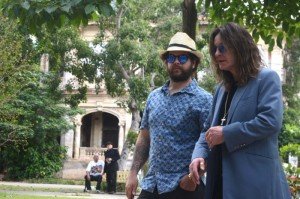 Ozzy with his son Jack at John Lennon Park (Photo:Yander Zamora)
Ozzy with his son Jack at John Lennon Park (Photo:Yander Zamora)
The origins of such a ritual come from Ozzy’s childhood, indelibly scarred by extreme poverty in deep England. But then his life changed, thanks to a couple of The Beatles’ records that fell into his hands when all indications were that he would be a teenager with a totally gloomy future. He is known to have always loved the dark, but his obsession with the Beatles would even lead him to form his first band along with talented guitarist Tony Iommi. At first they would play blues, but then they embraced the celebration of black magic, the occult, and the symbolic universe of human desolation.
Black Sabbath and heavy metal as a genre and philosophy were thus born.
Already in 2016, Ozzy knows that he is a survivor who got chaos into some sort of order and beat his legends in the last rounds. He is also aware of his huge influence on the world of rock and roll.
The vocalist has more plans for the afternoon. After his homage to Lennon he heads for the Submarino Amarillo (Yellow Submarine), walking unhurriedly, as if cloaked in an unusual kind of peace by no means typical of the wild and somber character that he plays on stage.
Once there, he looks with interest at the allegorical images of The Beatles, reads the excerpts of their songs printed on the walls and sits on a table at the foot of the stage. His son Jack accepts two alcohol-free drinks for him and his father. In front of them is the famous Cuban guitarist Luis Manuel Molina, who pays a little tribute to Ozzy by impeccably playing three of his songs, which Molina has included in his own repertoire: Changes, Dee and Mr. Crowley.
Surprised, the British musician thanks the guitarist and then starts a dialogue with this reporter and three famed journalists and rock music specialists: Guille Vilar, Juan Camacho and Joaquín Borges Triana. “I wouldn’t be here now if it wasn’t for The Beatles. I come from a very poor family, and when I was a young boy they captured my heart.
“When I first listened to them, it was as if all my dreams had showed up right before me. They simply captured my soul, and when I met Paul McCartney it was like meeting God”, Ozzy says, as the History Channel crew begins to tape the meeting.
I ask him about his visit to Lennon’s statue, and he confesses to feeling uncomfortable about such “memorials”.
“I met Ringo and Paul, but I never met John, although I would have loved to. I feel sad when I see his image in some memorial because it reminds me that his being shot was a very cowardly act. It is very sad that a man is murdered who gave people so much pleasure with his music”, he remarks.
In 2001 he released Dreamer, a rather mysterious song in his stock. He admits that the tune was inspired by The Beatles. “Since I’m such a fan of The Beatles, I unconsciously come up with melodies similar to theirs. It’s not that I was trying to write the next Imagine, but I care about the Earth and its places, and about people, violence and war. So it would be good if we could all get along, for we would have a much better world”.
Black Sabbath will make its farewells to the stage following their last world tour, scheduled to start in late January. Ozzy is thinking of forming a band for his new solo career, but he has not decided which musicians he will call yet. “My plan is to go on tour with Black Sabbath, and then I’ll take a short break and write a few new things. I still don’t know who will be in the band. I don’t know if the band I have now will be the same a year from now”.
Black Sabbath’s work with Ozzy as its front man summarizes most of heavy metal’s history. The 67-year-old musician puts the band’s long-lived success down to the friendly atmosphere among its members. “We’re all friends and get on well with one another. As I see it, my only cause is to respect people who pay for a ticket. I’m old enough and wiser than I used to be, so I don’t think it’s fair to have arguments on stage. It’s unfortunate to see how people become greedy, mad and divisive, which in most of the bands I have played with has spoiled the final result of the work, that is, music”.
Ozzy, whom we owed hymns like See you on the other side and I just want you, also mentions the guitarists that he has joined in the past. “When I audition a new guitar player, I send them one of my band’s songs and ask them to play it in front of me. The way I see it, if I’m in the front with my band behind me and I don’t have to say ‘stop’, I’m looking at the best one for me. Truth is, sometimes people overact, and I’m the boss of a machine that produces music, and a team that is not focused on the audience drives me crazy and bothers me”.
The reason for his trip to Cuba is the recording of the eighth chapter of a History Channel program called The World Tour, in which Ozzy describes his impressions about country he is visiting. “This is my first time in Cuba and it’s great. You feel safe here, that’s really great; if I had known I would have come before. We’re having a really good time here”. As if that weren’t enough, he rounds off his comments with a smile when asked about the chance to give a concert on the Island. “I want to come to Cuba to live here, not just to play”, he says before saying goodbye to us and hi to the heavy metal fans who were just arriving in Submarino… to see with their own eyes one of the great legends in the history of rock music.

Ozzy Osbourne
“Si no fuera por Los Beatles, yo no estaría aquí”
El motivo de su viaje a Cuba es la grabación del octavo capítulo de un programa de History Channel llamado The world tour
Autor: Michel Hernández | michel@granma.cu
10 de enero de 2016 21:01:34
 Ozzy junto a su hijo Jack en el parque Lennon. Foto: Yander Zamora
Ozzy junto a su hijo Jack en el parque Lennon. Foto: Yander Zamora
Ozzy Osbourne llega en un viejo auto al parque John Lennon en La Habana. Lleva una gabardina azul, pulóver negro, pantalón negro, pelo debajo de los hombros, su famoso crucifijo sobre el pecho, y un grueso anillo sobre la mano izquierda. Se detiene frente a la estatua del líder Beatle y dice algo en voz muy baja. Ozzy está acompañado de su hijo Jack Osbourne y de un equipo de la productora de televisión History Channel, que filma cada movimiento del histórico vocalista de Black Sabbath.
Los orígenes de ese ritual yacen en la infancia de Ozzy. El músico, que vivió su niñez atrapado en las garras más feroces de la pobreza en la Inglaterra profunda, vio cómo cambió su vida gracias a un par de discos de Los Beatles que cayeron en sus manos cuando todos los pronósticos apuntaban a que sería un adolescente con un futuro completamente negro. Se sabe que nunca pudo desprenderse de su apego por la oscuridad, pero su obsesión por Los Beatles lo llevaría, incluso, a formar su primera banda junto al talentoso guitarrista Tony Lommi. En principio, se dedicaron al blues pero luego entrarían en el mundo de la celebración de la magia negra, el ocultismo y el universo simbólico de la desolación humana.
De ese modo, nació Black Sabbath y, también, nació el heavy metal como género y filosofía.
El Ozzy 2016 sabe que es un sobreviviente. Sabe que puso orden en el caos, sabe que le ganó a su leyenda en los últimos rounds y sabe, además, de su enorme influencia en el mundo del rock and roll.
El vocalista tiene otros planes para la tarde. Luego de recordar a Lennon va hacia el Submarino Amarillo. Camina con pasos pausados, envuelto en una extraña tranquilad, alejada del personaje salvaje y sombrío que interpreta sobre el escenario.
Ya en la instalación, mira con interés las imágenes alegóricas a Los Beatles, lee las frases de sus canciones impresas en las paredes, se sienta en el centro de una mesa a los pies del escenario y su hijo, Jack, acepta dos bebidas sin alcohol para él y para su padre. Al frente, el notable guitarrista cubano Luis Manuel Molina le dedica un pequeño tributo. Son tres piezas incluidas por Ozzy en su repertorio, Changes, Dee y Mr.Crowley, que Molina interpreta impecablemente.
El músico británico, sorprendido, agradece al guitarrista antes de entablar un diálogo con este redactor y con tres históricos periodistas y especialistas de rock: Guille Vilar, Juan Camacho y Joaquín Borges Triana. “Si no fuera por Los Beatles yo no estaría aquí ahora. Yo vengo de una familia muy pobre y cuando era muchacho me capturaron el corazón.
Cuando los escuché por primera vez, era como si todos mis sueños aparecieran delante de mí. Simplemente capturaron mi alma y cuando conocí a Paul McCartney fue como encontrarme con Dios”, me dice Ozzy al comenzar el encuentro grabado por el equipo de History Channel.
Le pregunto sobre su visita a la estatua de Lennon y me confiesa que no se siente cómodo en ese tipo de “memoriales”.
“He conocido a Ringo, a Paul, pero nunca conocí a John, aunque me hubiera encantado. Me pongo triste cuando veo su imagen en algún memorial porque me recuerda que fue un acto muy cobarde lo del disparo. Fue muy triste el asesinato de un hombre que dio tanto placer a tanta gente a través de su música”, dice.
En el 2001 publicó Dreamer, un tema bastante enigmático en su repertorio. Me confiesa que la canción nació bajo la inspiración de Los Beatles. “Como soy tan fanático de Los Beatles, inconscientemente me sale melodía muy similar a Los Beatles. No era que estaba tratando de hacer una canción, como la próxima Imagine, pero yo me preocupo por la Tierra, los lugares, la gente, la violencia y las guerras. Y entonces sería bueno si todos nos pudiéramos llevarnos bien, tendríamos un mundo mucho mejor”.
Black Sabbath se despedirá de los escenarios tras su última gira mundial que romperá a finales de enero. Para su nueva etapa en solitario está pensando armar una banda, pero todavía no ha definido a qué músicos llamará. “Mis planes son hacer la gira con Black Sabbath y después tomaré un breve descanso y escribiré algunas cosas nuevas. Hasta ahora no sé todavía quién va a estar en la banda. No sé si el grupo que tengo ahora será el que tendré dentro de un año”.
La trayectoria de Black Sabbath con Ozzy como frontman resume una buena parte de la historia del metal. El músico, de 67 años, asegura que la alineación ha funcionado porque existe un clima de amistad entre sus músicos.“Somos todos amigos, nos llevamos bien. Según la manera en que yo lo veo, mi única causa es respetar a la gente que paga por comprar una entrada. Soy lo suficientemente viejo y más sabio ahora de lo que solía ser y no creo que sea justo tener un argumento impostado en el escenario. Es lamentable ver cómo la gente se vuelve avariciosa, se vuelve loca, y se divide. En la mayoría de las bandas con las cuales he estado, eso ha estropeado el resultado final del trabajo, que es la música”.
Ozzy, a quien le debemos himnos como See you in the other side y Just I want you, habla también sobre los guitarristas con los que ha compartido alineación. “Cuando hago una audición para un nuevo guitarrista, les envío una canción de mi banda, y hago que toquen delante de mí. De la manera en que yo lo veo, si estoy delante y mi banda está detrás y yo no tengo que decir alto, eso es un grupo genial para mí. Porque a veces la gente quiere sobreactuar y yo soy el jefe de una máquina que reproduce música y si ese equipo no está enfocado en la audiencia, me saca de quicio y me molesta”.
El motivo de su viaje a Cuba es la grabación del octavo capítulo de un programa de History Channel llamado The world tour, en el que Ozzy va narrando sus impresiones sobre el país que visita. “Esta es mi primera vez en Cuba y es fantástico. Uno se siente seguro aquí, es realmente genial, si lo hubiera sabido habría venido antes. Realmente lo estamos pasando muy bien acá”. Por si fuera poco, remata con una sonrisa cuando se le pregunta sobre la posibilidad de un concierto en la Isla. “Quiero venir a vivir a Cuba, no solo tocar aquí”, lanza antes de despedirse y saludar a los metaleros que iban llegando al Submarino para observar, con sus propios ojos, a una de las grandes leyendas de la historia del rock.
Tragic Dawn at Ti Arriba
- English
- Español
Violations and irresponsibility mark the tragic dawn at Ti Arriba
The creation of some kind of procedure to grant self-employment licenses for public transportation based on the same requirements that public bus drivers must meet remains an unresolved matter.
Author: Eduardo Palomares Calderón | palomares@granma.cu /
January 11, 2016
A CubaNews translation.
Edited by Walter Lippmann.
Santiago de Cuba.— Serious violations by any of the parties involved always lay behind every big accident, the experts in charge of clarifying them usually say. And the crash at Ti Arriba in which 13 people were killed and 17 others injured was no exception.
In less than 72 hours following its publication in Granma’s website, the news of what happened last December 28 at 6:50 a.m. had more than 12,300 visits and around 100 comments by readers, mostly requesting information about the cause of the accident and who was responsible, convinced of the lesson to be drawn from it. 
The left side of the truck in which thirteen La Maya-bound passengers ended up dead was totally destroyed. (Photo: Provincial Transit Authority)
Data provided by the Ministry of the Interior have it that the blame for what happened lies with La Maya resident Reynier Dip González, 26, who was driving a truck bound for Guantanamo that eventually went onto the lane on which Andrés Gómez Affarriba was driving his own truck from Yerba de Guinea to La Maya.
After avoiding a head-on collision —which allowed each of the drivers to survive unscathed— Reynier’s vehicle’s left side bumped against Andrés’s, leaving it a wreck all the way through the middle of the structure.
As a result, 13 people were killed instantly (seven women, six men, and two boys of 7 and 14) and many more injured, all of whom were on board the Zil-130 truck headed for La Maya. A valid remark, since at first some of the victims were mistakenly said to have been traveling on the other truck.
Provincial Transit Authority’s second-in-command, First Lieutenant Yoandris Rodríguez González, warns that in light of their great responsibility every self-employed owners and drivers of vehicles for public transportation are expected to avoid any violation of Act 109 of the Road Safety Code.
This is all the more imperative if we take into account that Juan Alberto Falcón Santana, the owner of the truck trademarked International that usually traveled the Havana-Santiago de Cuba-Guantanamo route employs three drivers, each of whom has lost their driver’s license at some point in the last three years for breaking the aforesaid legislation.
Dip González caused the accident precisely for violating Article 65 (about the obligation of traveling on the right lane when driving on that kind of highway), the same offense that earned him a ticket in the city of Santa Clara exactly one month before. And he was speeding to boot, considering the activity that his vehicle is designed for (speed limit 60 km/h).
Likewise, the investigation revealed the violation of Article 182—vehicles with technical flaws in the braking system are banned from circulation—since the emergency brake failed to work evenly on each wheel and therefore could not stop the truck from sliding onto the opposite lane.
Actually, this accident did not happen by sheer chance, nor was it just “bad luck”: the ticket issued in Santa Clara, plus the fact that this driver had been imposed another three fines that same year for carrying people to excess, parking beside a set of traffic lights, and going through a red light, make it clear that Reynier Dip was not suitable for this job.
Moreover, each of the other two drivers had been given four fines in 2015 for not having a license and registration, driving a vehicle with technical flaws, forbidden circulation, blocking the way, and distraction, among other traffic violations.
No doubt the existence of rules to grant a self-employment license for this occupation based on the same requirements that state-owned bus drivers must meet remains an unresolved matter.
The most serious of its kind in the last ten years in Santiago de Cuba, this accident not only plunged tens of families into mourning, it also sent the province—where millions of pesos have been invested in traffic signs and preventive work in general— to a hardly flattering third place at national level on the list of road fatalities in 2015.
Violaciones e irresponsabilidad en el trágico amanecer de Ti Arriba
El establecimiento de algún mecanismo para otorgar licencias en la transportación de pasajeros por cuenta propia, a quienes cumplan exigencias similares a las planteadas para conductores de ómnibus nacionales, aún es una asignatura pendiente
Autor: Eduardo Palomares Calderón | palomares@granma.cu
11 de enero de 2016 22:01:29
 Destrozado quedó el lateral izquierdo del camión en que fallecen las 13 personas que se dirigían a La Maya. Foto: Unidad Provincial de Tránsito
Destrozado quedó el lateral izquierdo del camión en que fallecen las 13 personas que se dirigían a La Maya. Foto: Unidad Provincial de Tránsito
SANTIAGO DE CUBA.—Violaciones graves por alguna de las partes involucradas están siempre detrás de todo gran accidente, suelen decir los especialistas responsabilizados con su esclarecimiento, y el caso en que fallecieron 13 personas y otras 17 resultaron lesionadas en Ti Arriba, no fue la excepción.
Acaecido a las 6 y 50 de la mañana del pasado 28 de diciembre, la publicación del hecho en la página digital de Granma registró en apenas 72 horas más de 12 300 visitas y cerca de 100 comentarios de lectores, quienes en general solicitaron de modo aleccionador la información sobre sus causas y responsables.
Según detalles facilitados por autoridades del Ministerio del Interior, la responsabilidad corresponde al ciudadano Reynier Dip González, de 26 años de edad y residente en La Maya, quien invadió con el camión que conducía hacia Guantánamo, la senda contraria por la cual circulaba el guiado por Andrés Gómez Affarriba, en dirección a La Maya.
Tras rebasar el frente sin contacto alguno, lo cual propicia que ningún conductor sufriera lesiones, ambos vehículos rozaron violentamente por su lateral izquierdo, quedando destrozado en más de la mitad el correspondiente al que transportaba pasajeros desde Yerba de Guinea a La Maya.
Como consecuencia quedaron sin vida 13 personas en el mismo sitio de la colisión (siete mujeres y seis hombres) incluyendo dos menores de 7 y 14 años, todos los cuales viajaban en ese Zil-130 que se dirigía a La Maya, que igualmente registra la mayoría de los heridos. Valga la precisión, pues erróneamente se relacionaron algunas víctimas al otro camión.
Al aportar tales elementos el primer teniente Yoandris Rodríguez González, segundo jefe de la Unidad de Tránsito en la provincia, señaló que atendiendo a su alta responsabilidad, propietarios de vehículos y conductores acogidos a la transportación masiva de pasajeros por cuenta propia, no deben estar asociados a peligrosas violaciones de la Ley 109, Código de Vialidad y Tránsito.
Revelador de ese imperativo es el hecho de que el camión marca International, propiedad de Juan Alberto Falcón Santana, que habitualmente cubría la ruta La Habana-Santiago de Cuba-Guantánamo, tiene a su cargo tres conductores y ninguno de ellos está exento en los últimos tres años a la suspensión de la licencia de conducción, por infracciones de la citada Ley.
Específicamente, Dip González provoca el accidente al violar el Artículo 65, que en síntesis establece transitar por la senda derecha del eje central de vías de ese tipo; el mismo por el que había sido reportado en Santa Clara otro día 28, pero de febrero último. Además, circulaba a exceso de velocidad para la actividad fijada al vehículo (60 km/hora).
De igual forma, la investigación arrojó la violación del Artículo 182, que prohíbe la circulación de vehículos con desperfectos técnicos en el sistema de frenos, pues el freno de servicio no accionó uniformemente en todas las ruedas y contribuyó al desplazamiento del carro hacia la senda opuesta.
Realmente el accidente estuvo lejos de ser obra de la casualidad o como se dice en cubano “mala suerte”, ya que si junto a la notificación de Santa Clara en el mismo año acumulaba otras tres por exceso de pasajeros, parqueo en zona de semáforos y violación de la luz roja, Reynier Dip carecía de idoneidad para este trabajo.
En cuanto a los dos restantes choferes, cada uno presentaba en el 2015 cuatro multas por viajar sin documentos, desperfecto técnico del vehículo, circulación prohibida, obstrucción en la vía y distracción, entre otras violaciones.
Sin duda alguna, asignatura pendiente constituye en el país el establecimiento de algún mecanismo que establezca en el sector particular el otorgamiento de licencias en esta actividad por cuenta propia, a quienes cumplan exigencias similares a las planteadas para conductores de ómnibus nacionales.
Mayor de su tipo en los últimos diez años en la provincia, además de enlutar a decenas de familias, el accidente ubicó a Santiago de Cuba, que ha invertido millones de pesos en la señalización de sus vías y el trabajo preventivo en general, en el nada halagüeño tercer lugar nacional en número de fallecidos por accidente del tránsito en el 2015.
Movie Filmed in Cuba Nominated for Oscar
Movie Filmed in Cuba Nominated for Oscar
The film had its world premiere at the Telluride Film Festival, where it was a great success
Author: Cubasi | internet@granma.cu
December 21, 2015 11:12:23
A CubaNews translation. Edited by Walter Lippmann.

Hector Medina stars in the film
Film “Viva”, set in Cuba and directed by Paddy Breathnatch, was chosen by the Irish Academy of Film and Television to represent the country at the Oscar Academy Awards as best foreign language film.
In this regard, Aine Moriarty, President of the Irish Academy, said: “The Irish Academy is delighted that this wonderful film by Paddy Breathnach and Mark O’Halloran represents Ireland at the Oscars. It reflects the creativity and diversity of points of view of this Irish team while shooting a Cuban story that is so tender, intriguing and visually captivating.”
The film had its world premiere at the Telluride Film Festival, where it was a success. In October, it will be presented at the Busan Festival.
Written by Mark O’Halloran, the drama follows Jesus, an 18 year old Cuban who is lost and trying to find his true identity. Unsure of himself or his future direction, he works at a drag queen club in Havana. There he pursues his dreams of becoming an actor, while earning money through prostitution.
He finds his oasis at home listening to the albums his mother and grandmother left him; or even watching the boxers who train next door. Then, something comes to his life that will challenge his direction and his freedom: his missing father, a famous boxer, who returns after spending 15 years in prison for killing a person in a street fight when Jesus was a child.
The cast includes Hector Medina, Jorge Perugorría and Luis Alberto Garcia.
Subscribe to Blog via Email
| M | T | W | T | F | S | S |
|---|---|---|---|---|---|---|
| 1 | 2 | 3 | 4 | 5 | 6 | |
| 7 | 8 | 9 | 10 | 11 | 12 | 13 |
| 14 | 15 | 16 | 17 | 18 | 19 | 20 |
| 21 | 22 | 23 | 24 | 25 | 26 | 27 |
| 28 | 29 | 30 | 31 | |||

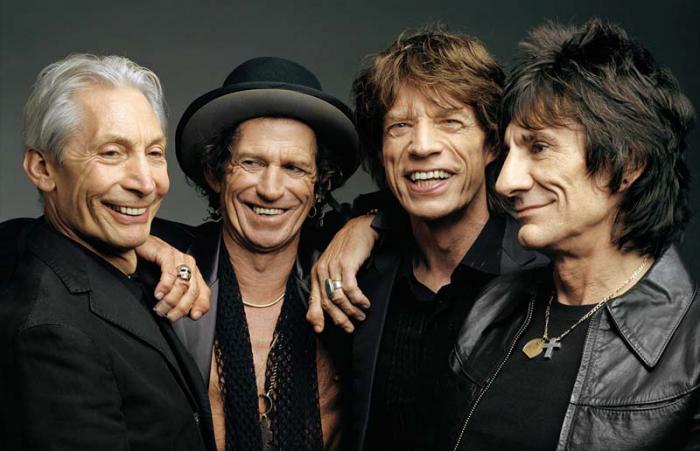

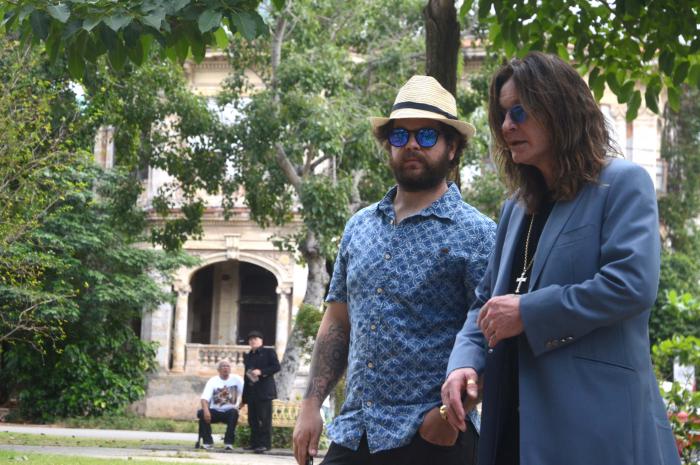

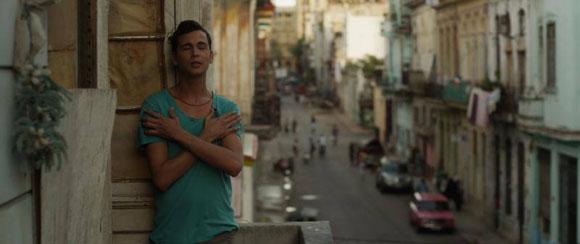

You must be logged in to post a comment.